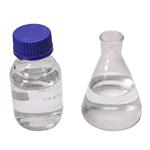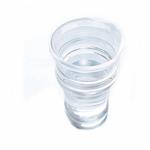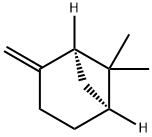- (1S)-(1)-beta-Pinene
-

- $50.00 / 1kg
-
2025-04-16
- CAS:18172-67-3
- Min. Order: 1kg
- Purity: 99
- Supply Ability: 5000
- (1S)-(1)-beta-Pinene
-

- $0.00 / 1KG
-
2025-04-15
- CAS:18172-67-3
- Min. Order: 1KG
- Purity: 99%
- Supply Ability: 500000kg
- (1S)-(1)-beta-Pinene
-

- $0.00 / 25KG
-
2025-03-21
- CAS:18172-67-3
- Min. Order: 1KG
- Purity: 99%
- Supply Ability: 50000KG/month
|
| | (1S)-(1)-beta-Pinene Basic information |
| Product Name: | (1S)-(1)-beta-Pinene | | Synonyms: | (1S)-(-)-BETA-PINENE 97+% FCC;(-)-Pinene, 99+% (97% EE/GLC);Bicyclo3.1.1heptane, 6,6-dimethyl-2-methylene-, (1S,5S)-;(1s)-(-)-á-pinene;ALPHA,BETA-PINENE;Bicyclo[3.1.1]heptanie, 6,6-dimethyl-2-methylene-, (1S)-;(1S)-(-)-SS-PINENE;(-)-BETA-PINENE +95% | | CAS: | 18172-67-3 | | MF: | C10H16 | | MW: | 136.23 | | EINECS: | 242-060-2 | | Product Categories: | Industrial/Fine Chemicals | | Mol File: | 18172-67-3.mol |  |
| | (1S)-(1)-beta-Pinene Chemical Properties |
| Melting point | −61 °C(lit.) | | Boiling point | 165-167 °C(lit.) | | alpha | -18.5 º (c=neat 25 ºC) | | density | 0.866 g/mL at 25 °C | | vapor density | 4.7 (vs air) | | vapor pressure | ~2 mm Hg ( 20 °C) | | FEMA | 2903 | BETA-PINENE | | refractive index | n20/D 1.478 | | Fp | 91 °F | | storage temp. | 2-8°C | | solubility | 95% ethanol: soluble1ml/3ml, clear, colorless | | form | Liquid | | color | Clear colorless to pale yellow | | Odor | at 10.00 % in dipropylene glycol. dry woody fresh pine hay green resinous | | Odor Type | herbal | | biological source | synthetic | | optical activity | [α]25/D 22°, neat | | Odor Threshold | 0.033ppm | | Water Solubility | insoluble | | Merck | 14,7446 | | BRN | 2038282 | | LogP | 4.4 at 25℃ | | CAS DataBase Reference | 18172-67-3(CAS DataBase Reference) | | NIST Chemistry Reference | Bicyclo[3.1.1]heptane, 6,6-dimethyl-2-methylene-, (1S)-(18172-67-3) | | EPA Substance Registry System | (-)-.beta.-Pinene (18172-67-3) |
| | (1S)-(1)-beta-Pinene Usage And Synthesis |
| Description | (–)-β-Pinene is a bicyclic monoterpene that has been found in various plants, including C. sativa, with diverse biological activities. It is lethal to S. littoralis third instar larvae (LD50 = 65 μg/larva). (–)-β-Pinene inhibits infectious bronchitis virus (IBV) replication (IC50 = 1.32 mM) and exhibits a cytotoxic concentration (CC50) value of greater than 10 mM in Vero cells. In vivo, (–)-β-pinene (100 mg/kg) decreases immobility time in the forced swim test in mice, an effect that can be reversed by the serotonin (5-HT) receptor subtype 5-HT1A antagonist WAY-100635 . | | Chemical Properties | clear colorless to pale yellow liquid | | Uses | (-)-β-Pinene has been used as a standard for the analysis of terpenoid compounds in plant essential oils by GC analysis. It may be used as a building block to synthesize natural products such as grandisol, robustadial and (+)-nopinone. (-)-β-Pinene undergoes hydroformylation in the presence of platinum/tin catalysts to form trans-10-formylpinane. | | Uses | It is a useful biochemical for proteomics research. It is also employed in the preparation of natural products, such as grandisol and robustadial. It is also applied as perfuming agent in cosmetics industry. | | Definition | ChEBI: (-)-beta-pinene is the (1S,5S)-enantiomer of beta-pinene. It is an enantiomer of a (+)-beta-pinene. |
| | (1S)-(1)-beta-Pinene Preparation Products And Raw materials |
|